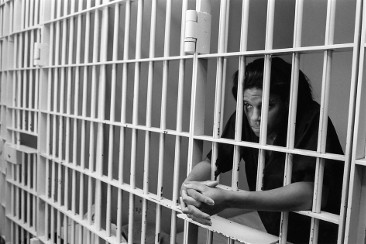|
|
| Race Reconciliation in Prisons |
| By Carl ToersBijns, former deputy warden, ASPC Eyman, Florence AZ |
| Published: 07/25/2016 |
 The purpose of this article is to enable corrections professionals to create, manage and establish a safer and more empathetic communication style and relationship with racially diverse prisoners. I have personally seen major progress in the area of racism and equal access to justice but we are still falling short of our own abilities to do a better job. Make no mistake, there has to be a clear demonstration of support by the administration leadership and how it administers these principles in a most volatile environment that is multi-cultural and challenging in many facets of law enforcement. Without the endorsement from the top, the tools given to facilitate this critical matter will never be successful.
The purpose of this article is to enable corrections professionals to create, manage and establish a safer and more empathetic communication style and relationship with racially diverse prisoners. I have personally seen major progress in the area of racism and equal access to justice but we are still falling short of our own abilities to do a better job. Make no mistake, there has to be a clear demonstration of support by the administration leadership and how it administers these principles in a most volatile environment that is multi-cultural and challenging in many facets of law enforcement. Without the endorsement from the top, the tools given to facilitate this critical matter will never be successful.
Many things have changed or are culturally shifting rapidly, As the generation of prisoners are now younger and most are people of color, there is a high need to create better political and judicial opportunities for those incarcerated today. For example, there are more than three-quarters of a million black men are now behind bars, and nearly 2 million are under some form of correctional supervision, including probation and parole. For black males ages twenty-five to thirty-four, at a time in life when they would otherwise be starting families and careers, one of every eight is in prison or jail on any given day. These are the realities we work with daily in law enforcement and penal institutions. For the sake of reducing tension, violence and assaults inside our prisons, there are investigations or inquisitions conducted to determine the need for the use force was justified. The current results have continued to exacerbate an already tense and explosive situation. There needs to be a tool for reasons to be established other than a finding a person, innocent or guilty. There needs to be a device or factor inserted that takes the facts of the crisis and produce them as mitigating factors and information we can learn and adjust from to prevent future conflicts. Putting this article in context where racism was not just a question of prejudice based on skin color or other historical definitions of “race”; it must also include any bias and discrimination against any group based on a part of that group’s identity, such as religion, immigration status, language, or country of origin. This is a growing factor each day as religion / theological, and secular influences are now exponentially a major concern for radicalism and extremism. We as correctional professionals need to engage in a dialogue with the population about diversity and face the fact that some confrontations are based misidentifying the problem thereby reducing the ability to manage and develop an attitude and relationship of reconciliation. Whether we agree or not, “race matters!” For the past decade this simple, declarative sentence has generated controversy in the United States and that offensiveness has to end. It is time for prison managers to implement a diverse and effective reconciliation program in place where they are presently missing. The benefits of such a positive growth. Reconciliation steps:
Information used and adapted from: This publication was supported by Grant No. 2002-HS-WX-0060 by the U.S. Department of Justice Office of Community Oriented Policing Services. Points of view or opinions contained in this document are those of the author and do not necessarily represent the official position or policies of the U.S. Department of Justice. Copyright © 2003 National Crime Prevention Council All rights reserved. Printed in the United States of America. December 2003 National Crime Prevention Council 1000 Connecticut Avenue, NW, Thirteenth Floor Washington, DC 20036-5325 202-466-6272 www.ncpc.org Corrections.com author, Carl ToersBijns, (retired), has worked in corrections for over 25 yrs He held positions of a Correctional Officer I, II, III [Captain] Chief of Security Mental Health Treatment Center – Program Director – Associate Warden - Deputy Warden of Administration & Operations. Carl’s prison philosophy is all about the safety of the public, staff and inmates, "I believe my strongest quality is that I create strategies that are practical, functional and cost effective." Other articles by ToersBijns: |
MARKETPLACE search vendors | advanced search

IN CASE YOU MISSED IT
|


Comments:
Login to let us know what you think